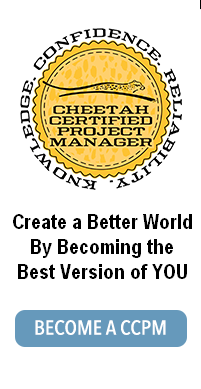21 Day Practice of Peace – Day 4 – Breathe
Michelle LaBrosse, PMP
Most of us take between 15,000 and 20,000 breaths every single day. Breathing is something we all do without even thinking about it – well until we can’t breathe. Then that is all we think about. In Cheetah’s classes – our students stop every ninety minutes for a stretching and breathing break. We teach them alternative nostril breathing as it helps balance the left and right sides of the brain.
Over the years, I’ve learned a wide variety of breathing techniques to:
1. Generate different brain states to better improve my focus, concentration and creativity in a neurofeedback program. This was a total trip – I’ve since learned how to stimulate different brain states using a program called brain wave generator – www.bwgen.com. No special breathing required. HOWEVER, the point is – breathing alone CAN and DOES change your brain wave states. And you can do it anywhere as you are breathing everywhere anyhow. Here are breathing patterns to stimulate different brain states:
Awake and Alert – Beta Brain waves: inhale to a 4 count, 4 hold or pause, 4 exhale, 4 hold – this is called “square breathing.”
Hypnogogic (great for self-hypnosis) – Alpha Brain waves: inhale to a 4 count, pause or hold 8, exhale slowly 8, hold 4
Lucid Dreaming – Theta brain waves: inhale to a 4 count, hold to a 8 count, 16 count exhale, and then pause to a 4 count
Deep Sleep – Delta brain waves: inhale to a 4 count, pause to an 8 count, exhale to a 24 count, and pause to a 4 count I think this one gives you hypoxia which is why you pass out.
2. In every yoga class I’ve ever taken, we use a focus on the breath in one way or another to become calm, centered and focused. I’ve done bunny breathing, fire dragon breathing, prayana breathing, etc. For many of these breathing exercises – blowing your nose ahead of time is highly recommended.
3. Develop a more coherent heart beat with a technique called “heart math.” This one is fascinating – I purchased their computer tracking system where you clip a device to your ear lobe and follow their breathing patterns on the computer screen. It maps how your heart rate is changing into better coherence over time. I practiced for twenty minutes a day for several weeks – the goal is to have the number of seconds between your heart beats become more consistent (coherence). The training got boring and I stopped. My heart seems fine. I did learn though how to stop the sensation of a racing heart by focusing on my heart while breathing rhythmically for several minutes.
4. Reduce stress generated high blood pressure with a machine I wore for half hour per day that basically taught me how to breath differently. If you have insomnia try this one – I fell asleep every time. You essentially are listening to a recorded beat you breath to. We discovered my blood pressure was from an adrenal tumor – which may have been stress induced – but that was not the current causation of the blood pressure so the breathing technique didn’t work to lower it.
5. Learned how to activate my parasympathetic nervous system through breathing techniques when working with a friend who was becoming a somatic psychologist. This was a combination of the neurofeedback breathing techniques and the breathing techniques I learned in yoga practice.
Here are eleven fascinating facts about breathing – http://www.mindbodygreen.com/0-4764/11-Fascinating-Facts-About-Breathing.html
For today – whenever I experience any sensation other than being calm and peaceful, I will stop and focus on my breath entering deep into my abdomen for ten breathing cycles.
Stay tuned tomorrow for why it’s so important to focus on the area right below your belly button when becoming more peaceful.


